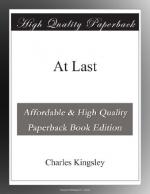Running down, then, by steamer, some thirty-six miles south from Port of Spain, along a flat mangrove shore, broken only at one spot by the conical hill of San Fernando, we arrived off a peninsula, whose flat top is somewhat higher than the lowland right and left. The uplands are rich with primeval forest, and perhaps always have been. The lower land, right and left, was, I believe, cultivated for sugar, till the disastrous epoch of 1846: but it is now furred over with rastrajo woods.
We ran, on our first visit, past the pitch point of La Brea, south-westward to Trois, where an industrial farm for convicts had been established by my host the Governor. We were lifted on shore through a tumbling surf; and welcomed by an intelligent and courteous German gentleman, who showed us all that was to be seen; and what we saw was satisfactory enough. The estate was paying, though this was only its third year. An average number of 77 convicts had already cleared 195 acres, of which 182 were under cultivation. Part of this had just been reclaimed from pestilential swamp: a permanent benefit to the health of the island. In spite of the exceptional drought of the year before, and the subsequent plague of caterpillars, 83,000 pounds of rice had been grown; and the success of the rice crop, it must be remembered, will become more and more important to the island, as the increase of Coolie labourers increases the demand for the grain. More than half the plantains put in (22,000) were growing, and other vegetables in abundance. But, above all, there were more than 7000 young coco-palms doing well, and promising a perpetual source of wealth for the future. For as the trees grow, and the crops raised between them diminish, the coco-palms will require little or no care, but yield fruit the whole year round without further expense; and the establishment can then be removed elsewhere, to reclaim a fresh sheet of land.
Altogether, the place was a satisfactory specimen of what can be effected in a tropical country by a Government which will govern. Since then, another source of profitable employment for West Indian convicts has been suggested to me. Bamboo, it is now found, will supply an admirable material for paper; and I have been assured by paper-makers that those who will plant the West Indian wet lands with bamboo for their use, may realise enormous profits.




